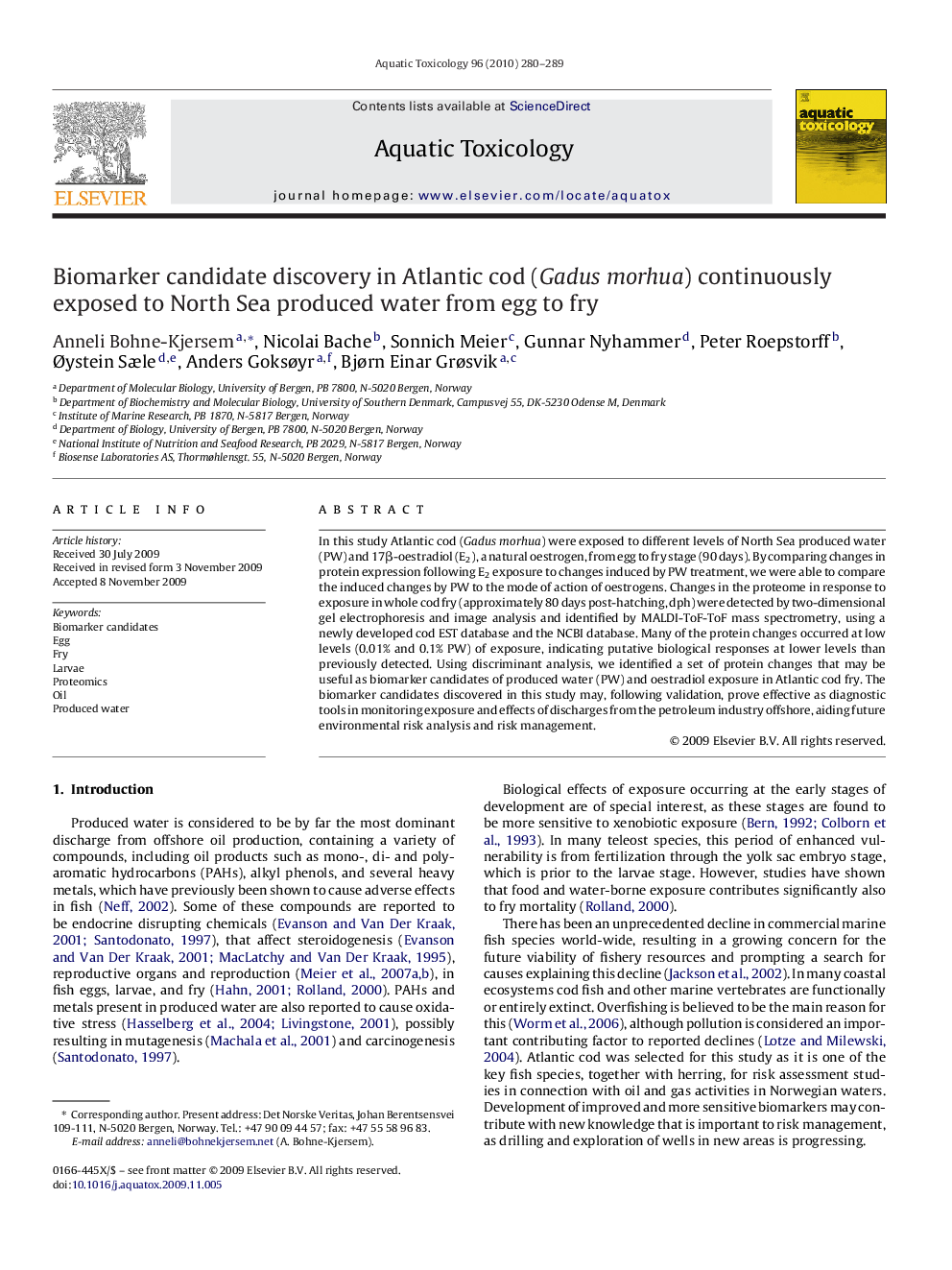| Article ID | Journal | Published Year | Pages | File Type |
|---|---|---|---|---|
| 4530304 | Aquatic Toxicology | 2010 | 10 Pages |
In this study Atlantic cod (Gadus morhua) were exposed to different levels of North Sea produced water (PW) and 17β-oestradiol (E2), a natural oestrogen, from egg to fry stage (90 days). By comparing changes in protein expression following E2 exposure to changes induced by PW treatment, we were able to compare the induced changes by PW to the mode of action of oestrogens. Changes in the proteome in response to exposure in whole cod fry (approximately 80 days post-hatching, dph) were detected by two-dimensional gel electrophoresis and image analysis and identified by MALDI-ToF-ToF mass spectrometry, using a newly developed cod EST database and the NCBI database. Many of the protein changes occurred at low levels (0.01% and 0.1% PW) of exposure, indicating putative biological responses at lower levels than previously detected. Using discriminant analysis, we identified a set of protein changes that may be useful as biomarker candidates of produced water (PW) and oestradiol exposure in Atlantic cod fry. The biomarker candidates discovered in this study may, following validation, prove effective as diagnostic tools in monitoring exposure and effects of discharges from the petroleum industry offshore, aiding future environmental risk analysis and risk management.
